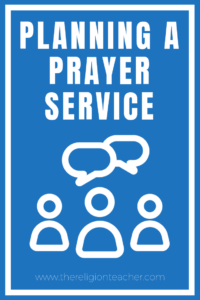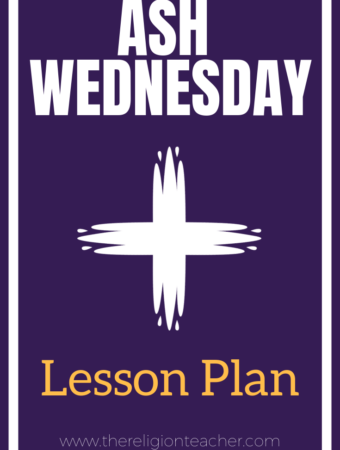The following article is an expanded excerpt from chapter 3 of Christ in the Classroom: Lesson Planning for the Heart and Mind, which describes various ways to use meditation and prayer in class to help students make personal connections to Christ through what they are learning.
 The goal of planning a prayer service for class is to provide a memorable and reverent experience around a certain topic.
The goal of planning a prayer service for class is to provide a memorable and reverent experience around a certain topic.
A prayer service is meant to be heartfelt. For that to be the case, plan for the students to participate in a prayer service after they have personalized the lesson’s topic through some sort of meditation activities.
Through meditation, they will gain some understanding of what God is saying to them personally today.
Then, in the prayer service, they can make the words of the prayers their own words as well. They can offer words as a response to God after encountering him in some way.
You can also integrate prayer and meditation in the same prayer service. With guided questions or reflection prompts, invite students to listen for God’s word in their minds and hearts.
Then, using the words written on the prayer aides for the prayer service, students can respond to God in an appropriate way.
Catholic Prayer Service Outline
Here is a basic outline for prayer services based loosely on the Catholic Mass that you can use in class or in larger groups of students and educators:
1. Sign of the Cross
2. Opening Prayer
3. Scripture Reading
4. Meditation/Reflection Questions/Homily
5. Prayers of Petition
6. Contemplative Prayer Experience
7. Closing Prayer
8. Sign of the Cross
Catholic Prayer Service Format Explained
Let’s explain each part of this format for a prayer service in a little more detail:
Sign of the Cross
This helps remind the students that they are initiating a prayerful experience that is different from the rest of the class. It invokes the Blessed Trinity’s presence especially during this prayer time.
Opening Prayer
You can compose the opening or closing prayers yourself or find traditional prayers to adapt and use in class.
Popular prayers such as the Prayer of St. Francis or St. Ignatius’s prayer for generosity, for example, work well at the opening and closing of the service.
The key is to make sure the prayers align with the focus of the lesson and the prayer service.
Scripture Reading
What excerpt from the Bible would fit best for the topic of your prayer service?
If nothing comes to mind, search online or use a Bible concordance with a list of words to browse through to discover an appropriate reading. Try to find something that takes only 1-2 minutes to read.
Meditation or Reflection Questions
After the reading, have the students reflect on what they have heard.
Give them some questions to help make personal connections to the topic of the prayer service through the lens of the Scripture verse they heard. Essentially, we want the students to think about what God is saying to them through this reading and through this prayer experience.
In many ways, this is what a good homily can do during Mass so feel free to offer a brief reflection for the students to help them make those personal connections.
Prayers of Petition
During Mass after the homily, we stand and pray together the Universal Prayer (Prayer of the Faithful). This series of petitions includes a prayer to God and a response from everyone usually with the words “Lord, hear our prayer.”
You can compose your own petitions or have the students do it in preparation for the prayer service. Composing prayers like this is a great group activity for students to work on together.
According to the USCCB website and the Roman Missal, in the Universal Prayer we pray a series of petitions for:
- our Church
- our country and political leaders
- those experiencing difficulty
- our local community
Contemplative Prayer Experience
In addition to a guided meditation and petitions tailored to the lesson, the prayer service can include a meaningful opportunity for contemplative prayer.
This may mean silent reflection on something from the reading. It can be silent time before the Eucharist. It can be silent prayer before a holy image or icon.
Nothing needs to be said or done other than to focus on the Lord and allow the students to meet him in some unique way.
Closing Prayer
Wrap up the prayer service with another appropriate prayer or simply end together in the Lord’s Prayer and maybe even the Sign of Peace.
Read more about integrating prayer into the classroom in Christ in the Classroom.


